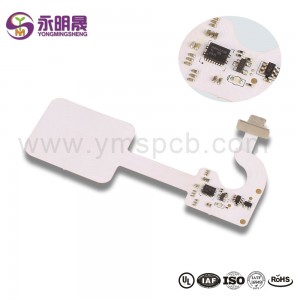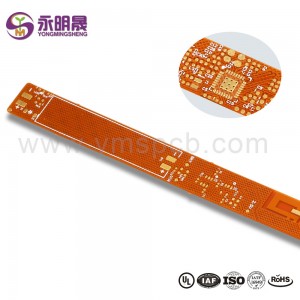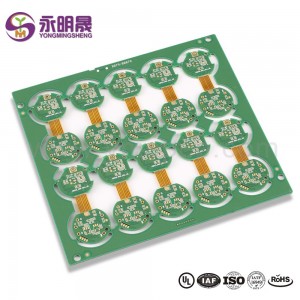Bendable,2Layer Flexible Printed Circuit Board | YMSPCB
Flexible Material Slicing
Most flexible board materials are rolling format.For different demanding, makers need to optimize the utilization.The first step in making FPC is slicing flexible material to working size.Roll-to-roll manufacturing is used to some mass-produced FPC and then the slicing procedure can be eliminated.
What is a flex PCB stiffener?
The purpose of the stiffener is to strengthen the mechanical strength of FPC (flexible circuit board) on account of facilitating the mounting of components on the PCB surface, etc.The types of stiffener used in the flexible circuit board are various, which mainly depends on the requirements of the product, such as PET, PI, adhesive, metal or resin stiffener, etc.
Flexible PCBs (FPC) are the PCBs that can be bent or twisted without damaging the circuits, which means the boards can be bent freely to conform to the desired shape during applications. The material the substrate used is flexible, such as Polyamide, PEEK, or a conductive polyester film. In many cases, flex circuits are made of polyimide or a similar polymer. This material dissipates heat better than most rigid circuit board materials. For this reason, flexible circuits can be placed in inconvenient locations where heat would impact the performance of a rigid circuit board. Flexible circuit boards can be designed to withstand extreme temperatures – between -200° C and 400° C – which explains why they are so desirable for borehole measurements in the oil and gas industry.
In fact, because of these conditions, and the need for small, unobtrusive devices in most industrial environments, flexible circuits represent the first choice for engineering design in most industrial sensor technologies.
High-temperature resistance comes usually comes with good chemical resistance and excellent resistance to radiation and UV exposure as well. Combined with the ability to control impedances in high-density circuit board designs, flexible circuit designs offer many benefits to manufacturers.
Learn more about YMS products
Flexible Printed Circuit Board
solder mask Flexible Board
FPC PCB 2Layer
Rigid flex pcb
People also ask
Learn about different aluminum substrates
Why can’t the aluminum substrate be short-circuited
Aluminum substrate is a composite material of resin, aluminum and copper foil
Video
Bendable,2Layer Flexible Printed Circuit Board | YMSPCB Related Video:



